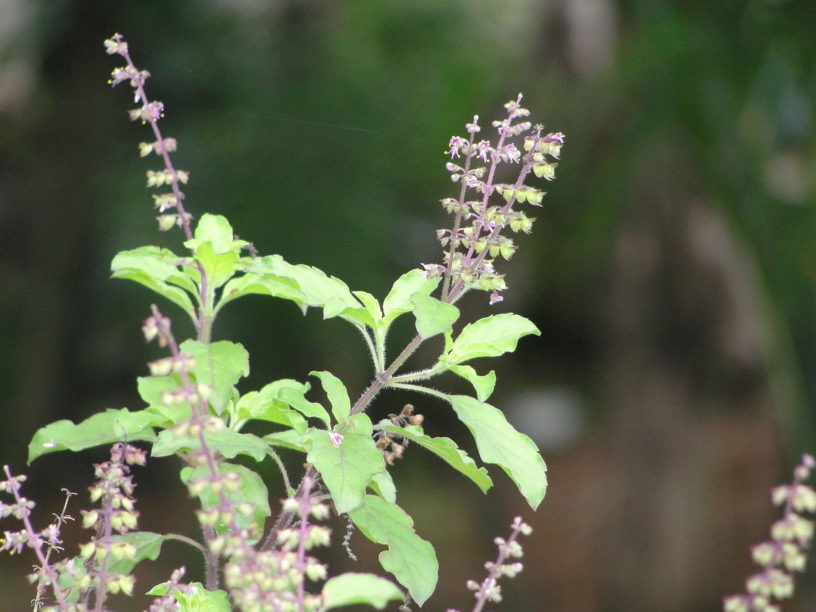During the month of Kaartik (October 25-November 22, 2018), Hindus are immersed in saadhan (spiritual discipline) such as vrat (fasting), praarthnaa (praying) and performing various forms of tapas (austerities). It is a time when many religious occasions are celebrated in the ongoing process of spiritual evolution. These naimittik karma (special religious observances) have been prescribed by the Hindu sages to help humanity in our quest to realize our true divine nature. They offer plentiful opportunities to increase our connection with the higher, spiritual self and release oneself from the bondage of negative qualities such as anger, greed, envy, lust and hate.
The entire month of Kaartik is dedicated to tulsi worship. Tulsi puja is one of the practices that is highly recommended by Devi Bhagwaat. This plant, which holds great significance to Hindus, is worshipped daily during this auspicious month. Tulsi plants are not only found in Hindu temples but are grown in many Hindu households. In Ayurveda it is well-regarded for its many medicinal properties.
It is a popular belief that where Tulsi Maa resides, auspicious vibrations, peace and prosperity always dwell. Tulsi Maa is representative of sattvic prakriti or piety, truth, goodness and righteousness; one who worships this form of Divinity becomes infused with these qualities.
It is said that in worshipping the tulsi we get the merits of visiting holy places of pilgrimage. There is a mantra that explains this special significance attached to the tulsi:
Moolay Tu Sarva Teerthaani
Saakhaa Tu Sarva Dayvataa
Pattay Tu Sarva Yagyaari
Tulsi Tu Namaami-aham.
Translation:
At the root of the tulsi reside all places of pilgrimage
On the branches of the tulsi reside the Gods
The leaves represent the various yagyas, religious sacrifices
Oh Mother Tulsi! I offer prostration to You.
In Kaartik, tulsi puja should be performed as follows:
- A tulsi plant should be planted near the jhandi-area or the eastern side of the home. Where this is not possible, a potted plant should be placed in a convenient spot for worship. The area around the plant should be kept clean.
- A few drops of water are sprinkled on the plant, five times.
- Chandan (holy paste) is applied.
- Offerings are made of flowers, essence, dhoop (incense) and
- A ghee-deya is lit near the plant and kept alight as long as possible.
- The following mantra should be recited during worship and jap (mantra recitation):
Om Sreem Hreem Kleem Aim Vrindaavanyai Swaahaa
This worship may be carried out at the sandhya or juncture hours, that is, morning, midday and evening. It is said that whatever legitimate desires one may have will come to fruition with sincere worship. By worshipping the tulsi and fully connecting with other special observances during the month of Kaartik, we continue to transform our lives and move forward along the way to enlightenment.




Shirley
Thank you for the opportunity to read and understand all these beautiful meaning and how important it is and what great benefits it have thank you again
Ram
Tutorial for kalash sthaapnaa.
Ram
Thanks for these clarifications which although known we tend to forget.Always include inspiring articles in your post for people to benefit.